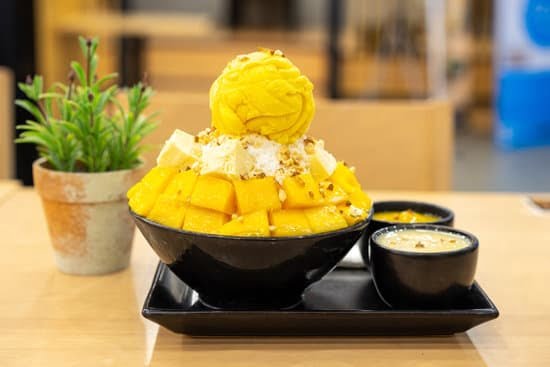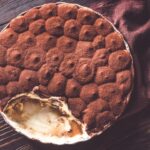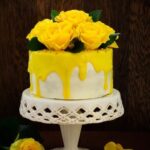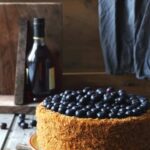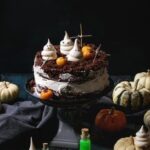Black frosting adds a touch of elegance and sophistication to chocolate cakes, enhancing the overall aesthetic. In this article, we will explore the importance of black frosting in chocolate cake decorating. We’ll discuss different types of frosting, the right ingredients for achieving a true black color, and how to prepare the perfect chocolate cake base.
Furthermore, we will provide step-by-step instructions on achieving the perfect black color in frosting and tips for achieving the right texture. Finally, we’ll explore techniques for applying black frosting flawlessly and add personal touches with creative decorating ideas. Mastering the art of black frosting will take your chocolate cake decorations to the next level.
Understanding the Basics
When it comes to chocolate cake decorating, choosing the right frosting is crucial. Different types of frostings offer varying flavors, textures, and levels of sweetness, making each option suitable for different preferences and occasions. Understanding the basics of different frosting options will help you achieve the perfect balance between taste and aesthetics for your chocolate cake.
- Buttercream Frosting: Buttercream is a classic choice for chocolate cakes due to its creamy texture and rich flavor. Made with butter, powdered sugar, and flavorings such as vanilla or chocolate extract, buttercream frosting can be easily manipulated to achieve a smooth and spreadable consistency. It also holds up well when piped into decorative shapes and designs.
- Cream Cheese Frosting: Cream cheese frosting pairs wonderfully with chocolate cake, adding a tangy and slightly tart flavor. The cream cheese gives this frosting a distinct creamy texture that complements the moistness of the cake. Cream cheese frosting is particularly popular for carrot cakes but can also work beautifully with chocolate cakes.
- Ganache: Ganache is a glossy and decadent frosting made by combining melted chocolate and heavy cream or butter. It adds an intense chocolaty flavor to any cake while creating a smooth and shiny finish. Ganache can be adjusted in thickness by altering the ratio of chocolate to cream or butter, making it versatile for both pouring over cakes or spreading onto them.
Each type of frosting has its advantages and disadvantages when it comes to achieving black frosting for your chocolate cake. Buttercream allows for easy coloring but may require more gel or powdered food coloring to achieve true black due to its naturally creamy color. Cream cheese frosting can also be dyed black using gel or powdered food coloring but may result in a softer shade due to its off-white base color.
On the other hand, ganache presents more challenges in achieving black frostings as it tends to result in a dark brown color. However, if you prefer a deep and rich black color, ganache can be your best option.
By understanding the basics of different frosting options, you can select the type that aligns with your desired taste and appearance for your chocolate cake. Whether you opt for buttercream, cream cheese frosting, or ganache, each choice will contribute to the overall success and beauty of your black frosting.
Choosing the Right Ingredients for Black Frosting
When it comes to creating black frosting for chocolate cake decorating, choosing the right ingredients is essential to achieving the best results. The quality of your ingredients can greatly impact both the flavor and appearance of your frosting. Additionally, using the appropriate type of food coloring is crucial in order to achieve a true black color.
First and foremost, it is important to use high-quality ingredients when making black frosting. Opt for unsalted butter that is at room temperature, as this will result in a smoother and more spreadable frosting. Using low-quality butter can lead to a greasy or inconsistent texture.
In terms of food coloring, using gel or powdered versions is recommended for achieving a true black color. Liquid food coloring may alter the consistency of your frosting, making it difficult to achieve the desired texture. Gel or powdered food coloring allows for greater control over the intensity of the color.
It’s also worth noting that different brands of food coloring can produce different results. Some brands may require more or less color to achieve a true black shade. Therefore, it’s advisable to start with a small amount of coloring and gradually add more until you reach your desired shade.
| Ingredient Type | Importance |
|---|---|
| High-Quality Butter | Results in smoother and more spreadable frosting |
| Gel or Powdered Food Coloring | Allows for better control over color intensity |
| Different Brands of Food Coloring | May require varying amounts to achieve desired black shade |
By choosing the right ingredients for your black frosting, you can ensure that your chocolate cake decorations not only look visually stunning but also taste delicious. Experiment with different brands of food coloring and fine-tune your recipe to achieve the perfect black color and flavor combination that suits your preferences.
Preparing the Perfect Chocolate Cake Base
When it comes to chocolate cake decorating, one of the most crucial elements is the cake base itself. A moist and flavorful chocolate cake serves as the foundation for the black frosting, allowing it to shine and enhance the overall aesthetic of your creation. Here is a simple and foolproof recipe for preparing the perfect chocolate cake base:
- Gather all the ingredients needed for the cake, including flour, cocoa powder, sugar, eggs, milk, vegetable oil, vanilla extract, baking powder, and baking soda.
- Preheat your oven to the specified temperature in the recipe.
- In a mixing bowl, combine the dry ingredients: flour, cocoa powder, sugar, baking powder, and baking soda. Use a whisk to ensure they are well combined.
- In a separate bowl, whisk together the wet ingredients: eggs, milk, vegetable oil, and vanilla extract.
- Pour the wet ingredients into the dry ingredient mixture and stir until just combined. Be careful not to overmix as this can result in a dense cake texture.
- Grease your cake pans with butter or cooking spray and divide the batter evenly between them.
- Bake in the preheated oven for the specified time in your recipe. To check if they are done, insert a toothpick into the center of each cake. If it comes out clean or with just a few crumbs attached, they are ready.
- Once baked, remove from the oven and let them cool in their pans for about 10 minutes before transferring them onto a wire rack to cool completely.
By following these steps and using high-quality ingredients like premium cocoa powder and pure vanilla extract, you can ensure that your chocolate cake base will be moist and delicious – providing an excellent canvas for your black frosting.
Remember, a stable and solid cake base is essential when it comes to decorating with black frosting, as it can be quite heavy. To ensure the cake is sturdy enough to handle the additional weight, consider using a denser recipe or layering your cake with a supportive filling like ganache or cream cheese frosting. This will not only provide stability but also add an extra dimension of flavor to your chocolate cake creation.
With a perfectly prepared chocolate cake base, you are now ready to move on to the next step in creating stunning chocolate cake decorations – achieving the perfect black color in frosting.
Achieving the Perfect Black Color in Frosting
When it comes to making black frosting for chocolate cake decorations, achieving the perfect black color can be a bit of a challenge. However, with the right techniques and ingredients, you can achieve a deep, rich black shade that will add elegance and sophistication to your cake design. In this section, we will guide you through the step-by-step process of mixing coloring agents to achieve black frosting and provide tips for avoiding common pitfalls.
Step-by-Step Instructions for Mixing Coloring Agents
To achieve a true black color in your frosting, it is important to start with a chocolate base. You can either use a ready-to-use chocolate frosting or make your own by adding cocoa powder or melted chocolate to your preferred frosting recipe. Once you have your chocolate base ready, it’s time to add the coloring agents.
Start by using a gel or powdered food coloring specifically designed for achieving vibrant colors. These types of food coloring are more concentrated and less likely to alter the consistency of your frosting compared to liquid food coloring.
Begin by adding small amounts of black gel or powdered food coloring to your chocolate base and mix well until fully incorporated. Gradually add more color little by little until you achieve the desired shade of black, remembering that it is easier to darken the frosting than lighten it.
Avoiding Common Pitfalls
One common issue when trying to achieve black frosting is ending up with gray or muddy-looking results. To avoid this, make sure to use high-quality coloring agents as some brands may not produce true blacks and instead result in dull shades. Additionally, be cautious when adding other colors such as red or blue, as they can create unwanted undertones in your black frosting.
Another tip is to let your colored frosting sit for at least an hour before using it on your cake. This resting period allows the color to fully develop and deepen, ensuring a more intense black hue. If after resting you find that your frosting is still not as black as desired, you can add more coloring agents and repeat the process.
By following these steps and tips, you can achieve the perfect black color in your frosting, adding a dramatic touch to your chocolate cake decorations. In the next section, we will discuss the importance of achieving the right texture for black frosting to ensure a flawless finish on your cake.
Consistency is Key
Achieving the right texture for black frosting is crucial to create a smooth and velvety finish that complements the chocolate cake. The consistency of the frosting can greatly affect its spreadability, piping abilities, and overall appearance on the cake. Here are some guidelines to help you achieve the perfect texture for your black frosting.
Adjusting Frosting Consistency
Before getting started, it’s important to note that different types of frosting have different consistencies. Buttercream tends to be thicker and creamier, while cream cheese frosting is softer and lighter. Ganache, on the other hand, has a more liquid-like consistency.
To adjust the consistency of your black frosting, you can make simple modifications based on your desired purpose. For spreading or filling between layers, you may want a slightly softer frosting that is easier to work with. To achieve this, add small amounts of milk or heavy cream one tablespoon at a time until you reach the desired thickness.
If you plan on piping intricate designs or borders onto your cake, a stiffer frosting is necessary. Adding additional powdered sugar can help thicken the frosting for better hold and definition during piping.
Tips for Achieving a Smooth Texture
To ensure a smooth texture in your black frosting, it’s crucial to beat it properly. Start by using softened butter or cream cheese at room temperature to avoid lumps in the finished product.
Using an electric mixer on medium speed, beat the butter or cream cheese until light and fluffy. This process helps incorporate air into the mixture for a smoother consistency. Gradually add powdered sugar and continue beating until fully combined and creamy.
For ganache-based frostings, slowly pour warm heavy cream over chopped chocolate while constantly stirring until smooth and glossy. Allow it to cool to room temperature before whipping it into a lighter consistency.
Additional Tips
If your black frosting appears too thin or runny, you can thicken it by adding more powdered sugar. On the other hand, if it’s too thick or stiff, add small amounts of milk or heavy cream to loosen it up.
Remember that the temperature of your kitchen can also affect the consistency of the frosting. If it’s particularly warm, your frosting may become softer and more difficult to work with. In this case, refrigerate the frosting for a few minutes before applying it to the cake.
By achieving the right texture for your black frosting, you’ll have a versatile decorating tool that can be easily spread, piped, and shaped onto your chocolate cake. The smooth and velvety consistency will enhance both the visual appeal and taste of your cake, making it a true showstopper.
Applying Black Frosting to the Chocolate Cake
Once you have prepared your black frosting and perfected its consistency, it’s time to apply it to your chocolate cake. The application process requires patience, precision, and attention to detail, but with the right techniques, you can achieve a flawless finish that will truly impress.
To start, make sure your chocolate cake is completely cooled. Applying frosting to a warm cake can cause it to melt or become runny, resulting in a messy appearance. If needed, you can refrigerate the cake for a short period of time to ensure it is cool enough for frosting.
When applying the black frosting, it is important to work in even layers. Using an offset spatula or icing smoother, start by spreading a thin layer of frosting on the top of the cake. Gradually add more frosting as needed while spreading it evenly across the surface. This will help create a smooth base for additional layers and decorations.
As you apply each layer of black frosting, be mindful of avoiding clumps or streaks. Use long, sweeping motions to spread the frosting and smooth any imperfections. If you find that there are spots where the cake peeks through, simply add more frosting and blend it in until all areas are covered.
Remember that patience is key during this process. Take your time and focus on achieving an even distribution of frosting throughout the entire cake. It may be helpful to step back occasionally and evaluate your progress from different angles to ensure consistency.
Once you have achieved a smooth and even layer of black frosting on your chocolate cake, feel free to add any additional decorative elements such as edible glitter, sprinkles or fondant accents. These extra touches can take your cake design to the next level and create a visually stunning masterpiece.
Adding Personal Touches
Black frosting opens up a world of creative possibilities when it comes to decorating chocolate cakes. Its rich and bold color can be used to create stunning designs that are sure to impress. In this section, we will explore some decorating ideas that utilize black frosting and provide tips for incorporating additional decorative elements.
One popular idea is to use black frosting to create elegant swirls and patterns on the cake surface. This can be achieved by using a piping bag fitted with a decorative tip.
Start by applying a thin layer of black frosting all over the cake and then use the piping bag to create intricate designs such as spirals, rosettes, or even delicate lace patterns. The contrast between the dark black frosting and the rich chocolate cake creates a visually striking effect.
Another fun decorating idea is to add edible glitter or sprinkles to the black frosting. This adds an extra touch of sparkle and glamour to the cake, making it perfect for special occasions like birthdays or weddings. Simply sprinkle the edible glitter or sprinkles onto the frosted surface of the cake, focusing on areas where you want to create visual interest or highlight specific design elements.
If you’re feeling more adventurous, you can also experiment with fondant accents in combination with black frosting. Fondant is a pliable icing that can be rolled out and shaped into various designs. Cut out shapes such as flowers, bows, or stars from colored fondant and place them strategically on top of the black frosted cake. This creates a layered effect that adds texture and dimension to your overall design.
| Decorative Element | Description |
| Edible Glitter | Adds a touch of sparkle and glamour to the cake |
| Sprinkles | Provides a fun and playful element to the design |
| Fondant Accents | Creates texture and dimension with carefully placed fondant shapes |
By combining black frosting with these decorative elements, you can take your chocolate cake decorating to the next level. The key is to experiment and let your creativity shine through. Whether you’re adding a touch of elegance or creating a whimsical design, black frosting offers endless possibilities for stunning cake decorations.
Conclusion
In conclusion, mastering the art of black frosting is essential for creating stunning chocolate cake decorations. Black frosting adds a touch of elegance and sophistication to chocolate cakes, enhancing their overall aesthetic. However, achieving the perfect black color in frosting can be challenging.
It is important to choose high-quality ingredients and use gel or powdered food coloring for true black color. The right texture of the frosting is also crucial, as it should be smooth and velvety to complement the chocolate cake.
Throughout this article, we have discussed various aspects of making black frosting for chocolate cake decorations. We explored different types of frostings, highlighting their pros and cons when it comes to achieving black color. We also emphasized the importance of using the right ingredients and provided tips on mixing coloring agents to achieve the desired shade of black.
Additionally, we discussed techniques for applying black frosting to the cake for a flawless finish. Precision and patience are key during this process to achieve even layers without clumps or streaks. Furthermore, we encouraged readers to add their own personal touches by experimenting with creative cake designs using black frosting.
By following the steps outlined in this article, readers can elevate their chocolate cake decorating skills and create stunning masterpieces with black frosting. Embrace your creativity and explore different decorative elements such as edible glitter, sprinkles, or fondant accents to make your cakes truly unique.
In summary, with a solid foundation in understanding different types of frostings, choosing the right ingredients, achieving the perfect black color, and applying it flawlessly onto your chocolate cake base-readers can now confidently master the art of black frosting for stunning chocolate cake decorations.
Frequently Asked Questions
Can you turn chocolate frosting black?
Yes, it is possible to turn chocolate frosting black. However, achieving a true black color can be a bit challenging, as chocolate tends to have a natural brown tint. To overcome this, you may need to use a higher concentration of black food coloring or combine it with other colors to achieve the desired shade of black.
What colors do you mix to make black frosting?
When mixing colors to make black frosting, the primary color you will need is black food coloring. Black food coloring typically consists of a blend of various colors such as blue, red, and yellow.
By combining these primary colors in higher concentrations, you can create a deep shade of black. Adding more blue and red will help darken the frosting, while adding yellow will help neutralize any remaining brown tones.
Is it easier to dye chocolate frosting black?
Dyeing chocolate frosting black can be easier in some ways compared to lighter frostings. The natural brown color of chocolate acts as a good base when trying to achieve black.
Since darker shades are generally easier to work with when dyeing, adding black food coloring to chocolate frosting can result in a deeper and richer shade of black without needing excessive amounts of food coloring. However, getting a true black color might still require carefully adjusting the amount and combination of different colored food dyes if starting from a light-colored chocolate frosting base.

Welcome to our cake decorating blog! My name is Destiny Flores, and I am the proud owner of a cake decorating business named Cake Karma. Our mission is to provide delicious, beautiful cakes for all occasions. We specialize in creating custom cakes that are tailored specifically to each customer’s individual needs and tastes.

